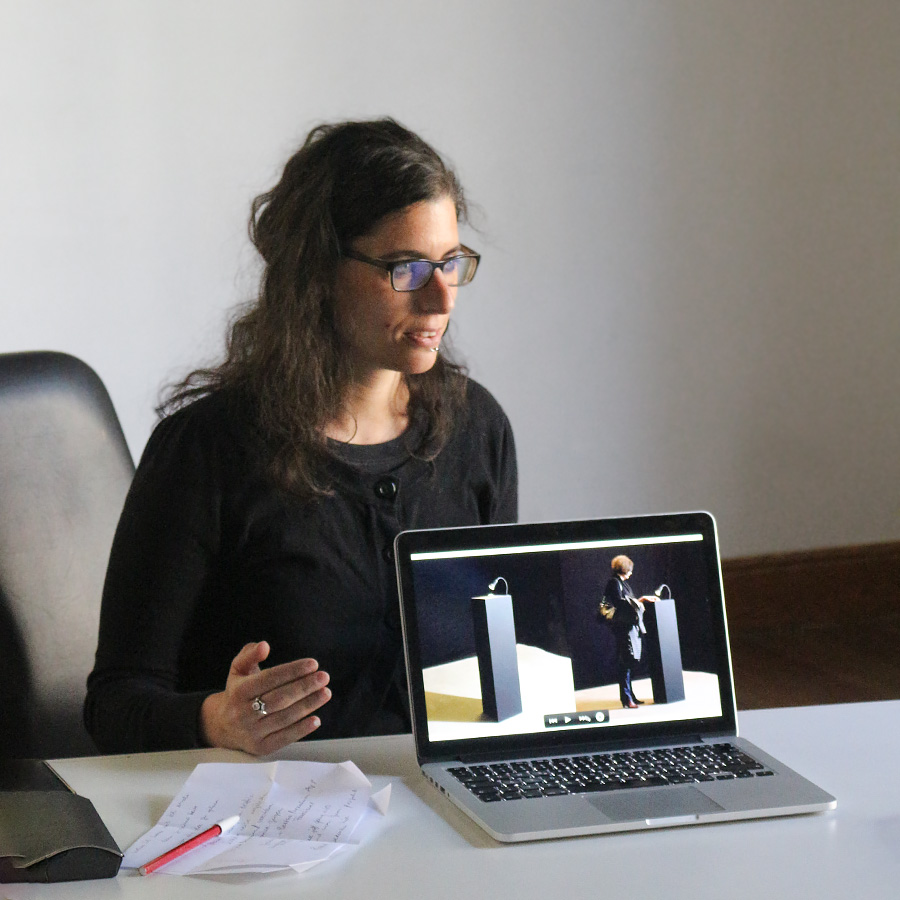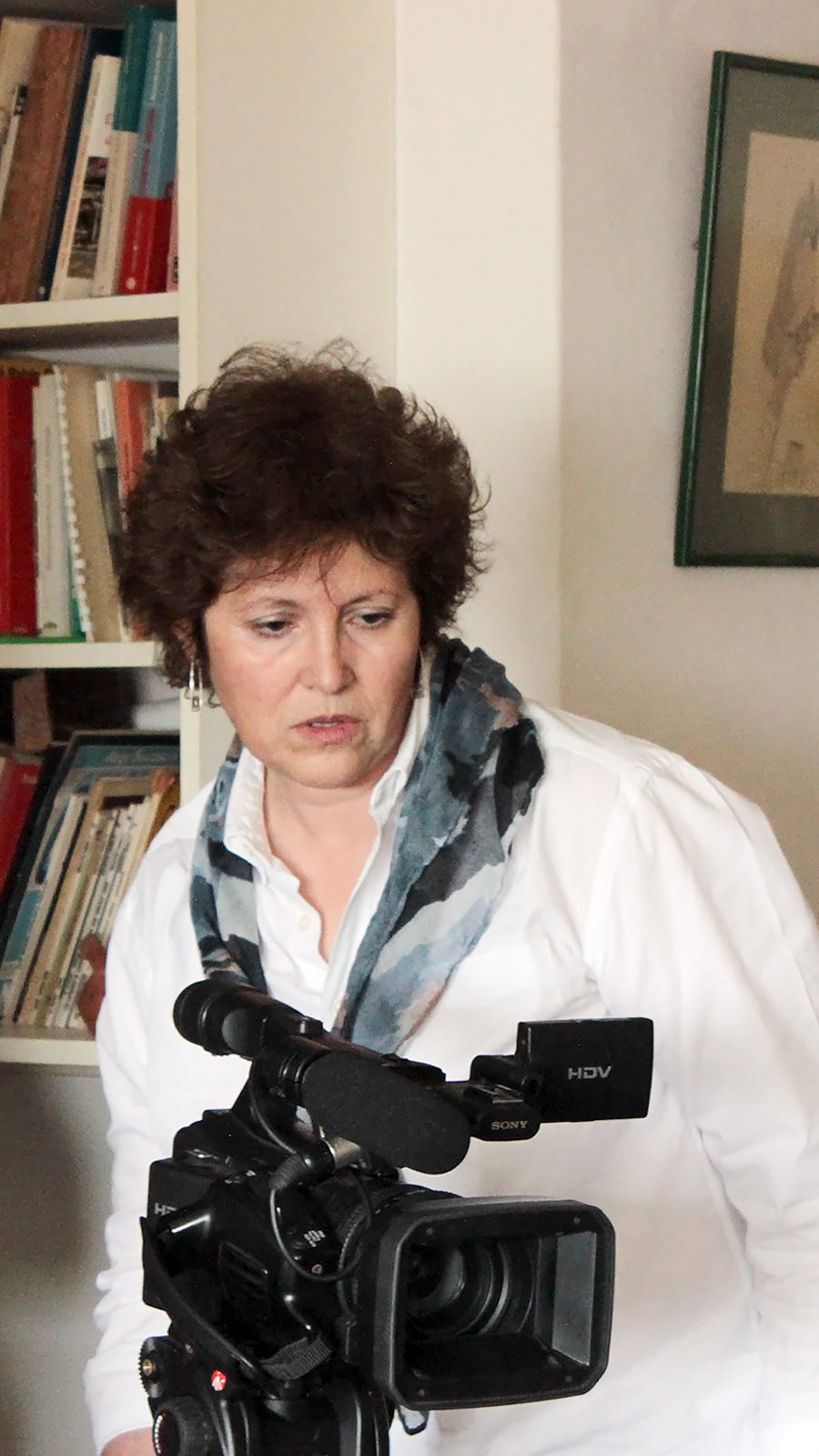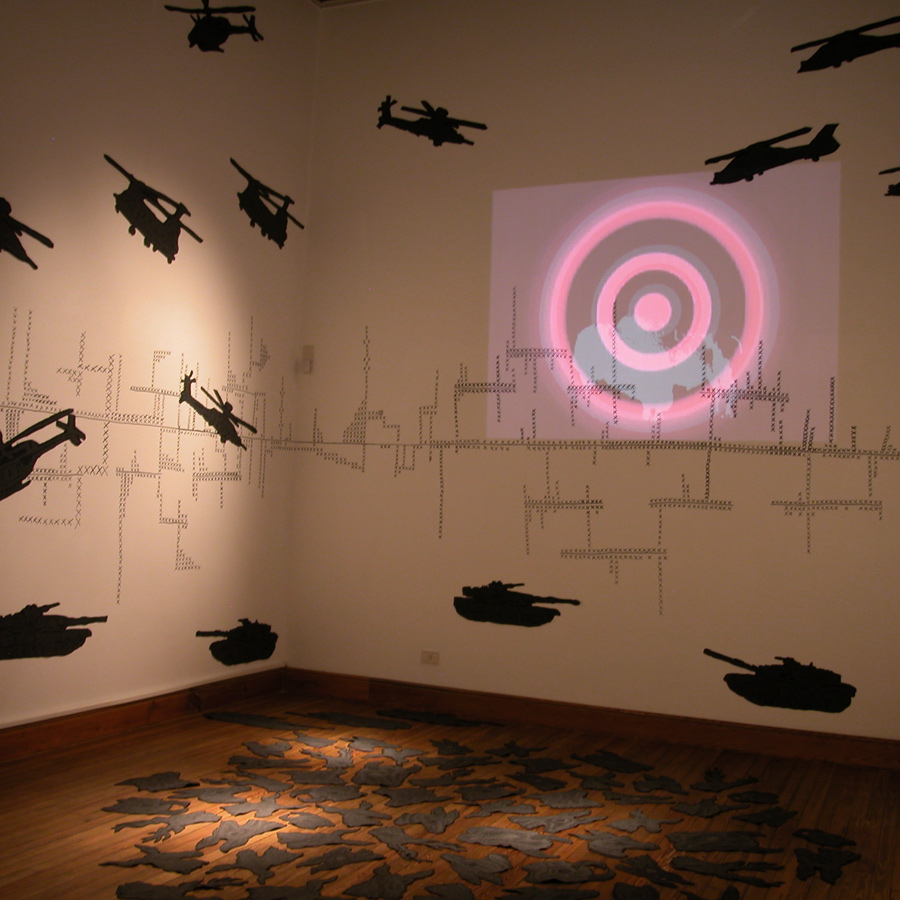Artists
Argentina
Monica Camin
Perpetually Settling Dust
04.05.15 22.05.15
Monica Camin is an argentine artist, daughter of Jewish-German parents who found refuge in Argentina. She lived in Israel for 10 years and currently lives in the United States. Her artistic career began as a child, assisting her father with his copper repoussé. Later, she received formal training in Buenos Aires and New York. Camin dedicates herself to explore the deepest closeness between the self structure and the universalities of human beings, the emotional energy that leads the course of things, even if its implicit or explicit, the becoming of things.
Perpetually Settling Dust (El Rezo) is an examination of the residual effects of a cultural trauma reflected by a mixed-media transition piece that shifts in the approach and process of painter/sculptor Monica S. Camin’s practice.
Through exploration of her roots, her own individual existence and the effects of a life lived, Camin uses her work to ask questions and find answers through her narrative creations. The project that she is developing in ‘ace is also a work in collaboration with the Cuban photojournalist Kaloian Santos Cabrera.
ARTIST STATEMENT
Like most inquiries about history, identity and accountability, one response disrupts another. And much like the aftermath of conflict and the unknown consequences of our own actions, we are left with perpetually settling dust. Art exposes the fact of a multiplicity of histories, driven especially from an emotional and psychological perspective, which is what I respond to most.
In my case, there have been two historic events of state terrorism that have transpired in places that I consider my deepest roots. I belong to the second generation of survivors of World War II. For over ten years my work focused on how this affected me personally. I am also part of a generation in Argentina that suffered state terrorism, although by the time El Proceso occurred, I had already emigrated. From roughly 1974–1983 30,000 people were disappeared. It is estimated that 500 children were stolen, adopted and deprived of their true identity. These children are now adults.
—————-
We are grateful to the embroidery encounters participants: Niza Ballestero, María Noel Caridad, Cristina Duro, Elinor Peiretti, Silvia Guigón, Elena Gil, Melody Lachica Guini, Javier Cuberos, Veronica Souto, Clara Stivel, Susana Camin, Paola Cohen, Deborah Kaufman, Barita Vincenti, Denise Margueles, Miriam Bergonzi, Alba Castillo, Celina Levy, Beatriz Vaitkeviciuds, Sandra Astuena, Diana Susevich, Laura Ponturo.
BIO
Monica Camin
1949 | Buenos Aires, Argentina.
Lives and works in Houston and Fair Haven, USA.
STUDIES
1987 | The New School, Chaim Gross Sculpture. New York, USA.
1983 – 1987 | Art Students League, New York, USA.
1968 – 1971 | Manuel Belgrano Art University, Buenos Aires, Argentina.
1963 – 1967 | Paula A. Sarmiento Art Academy, Olivos, Buenos Aires, Argentina.
Her work has been shown in national and international exhibitions.
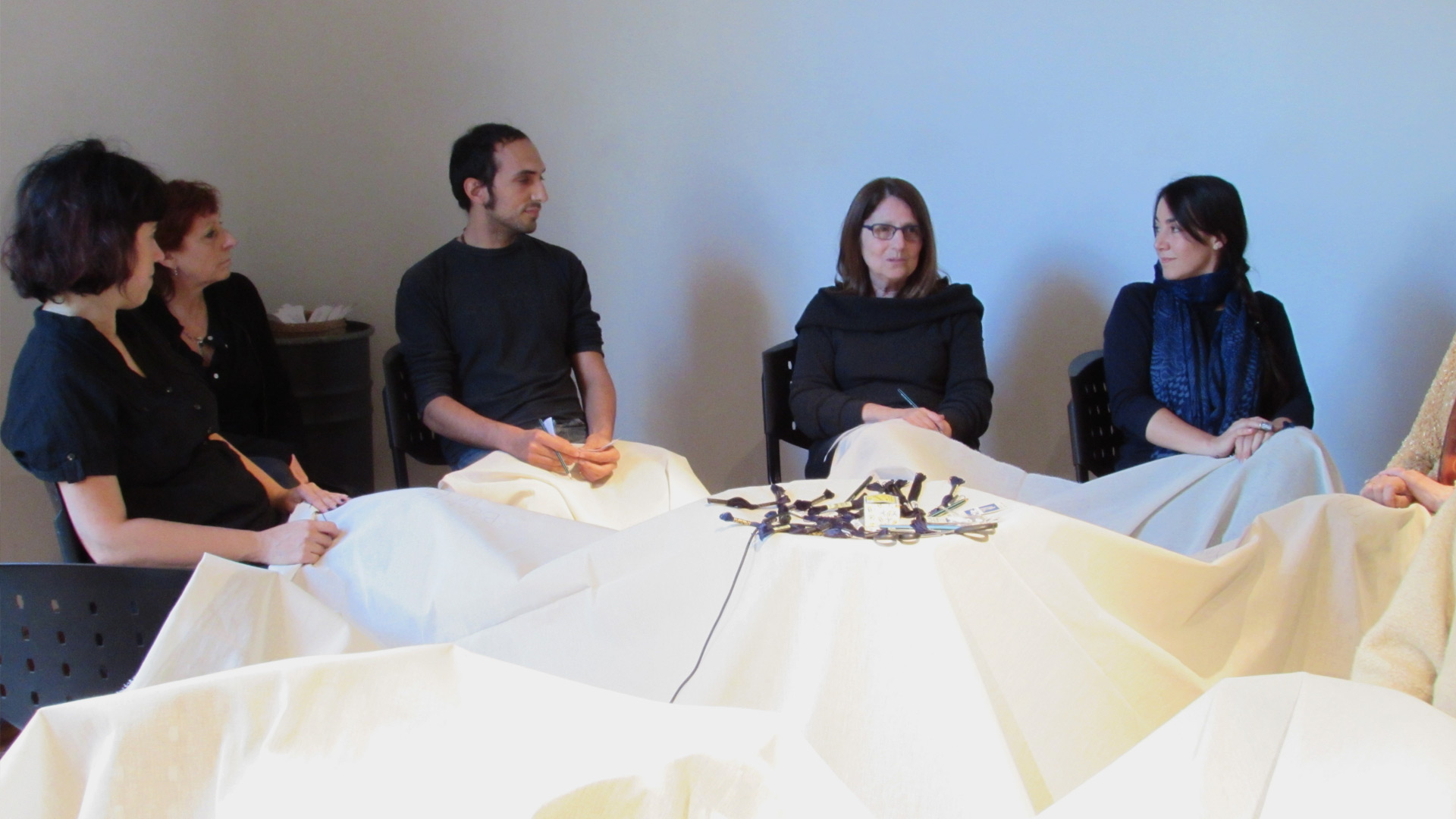
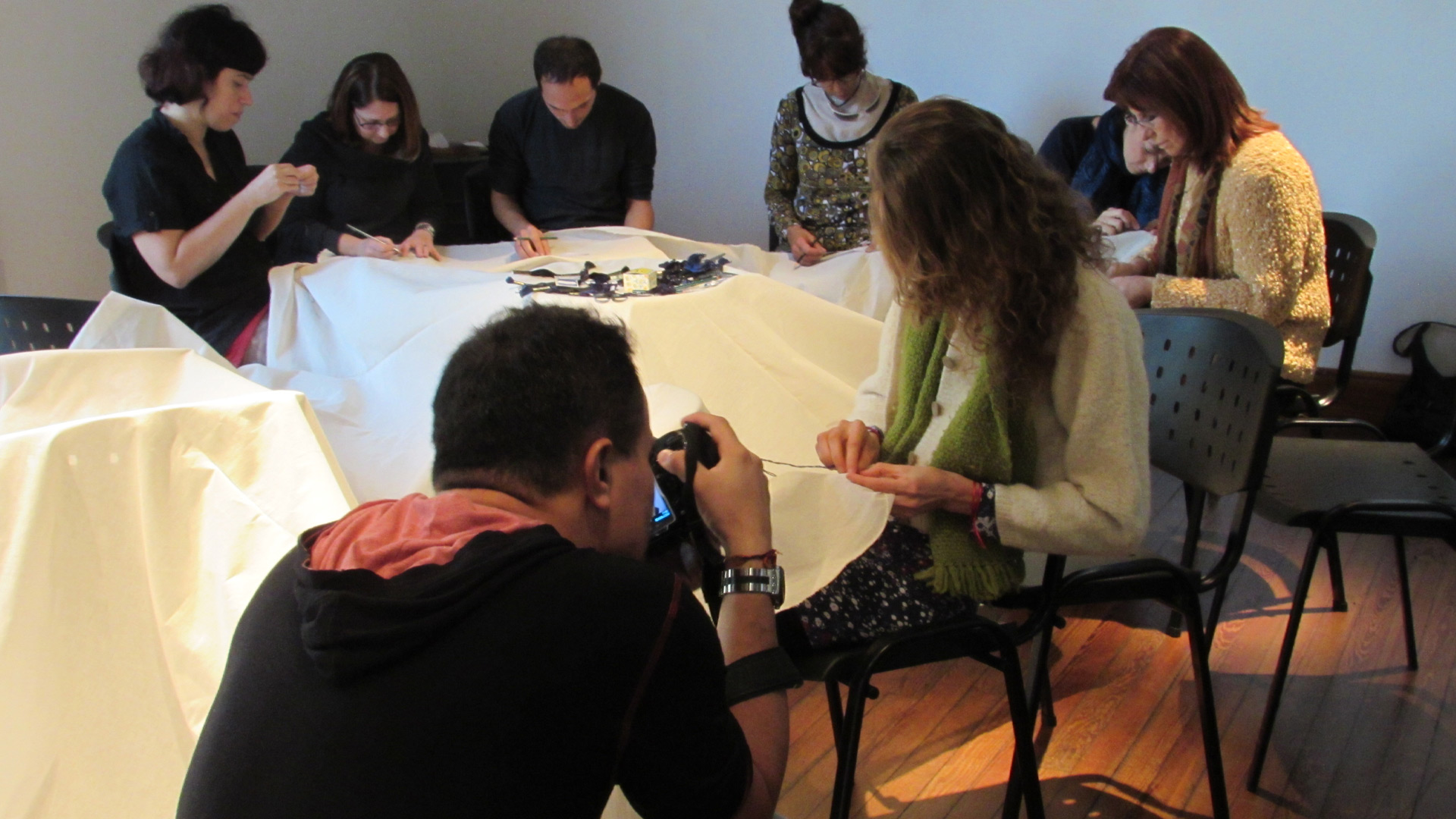
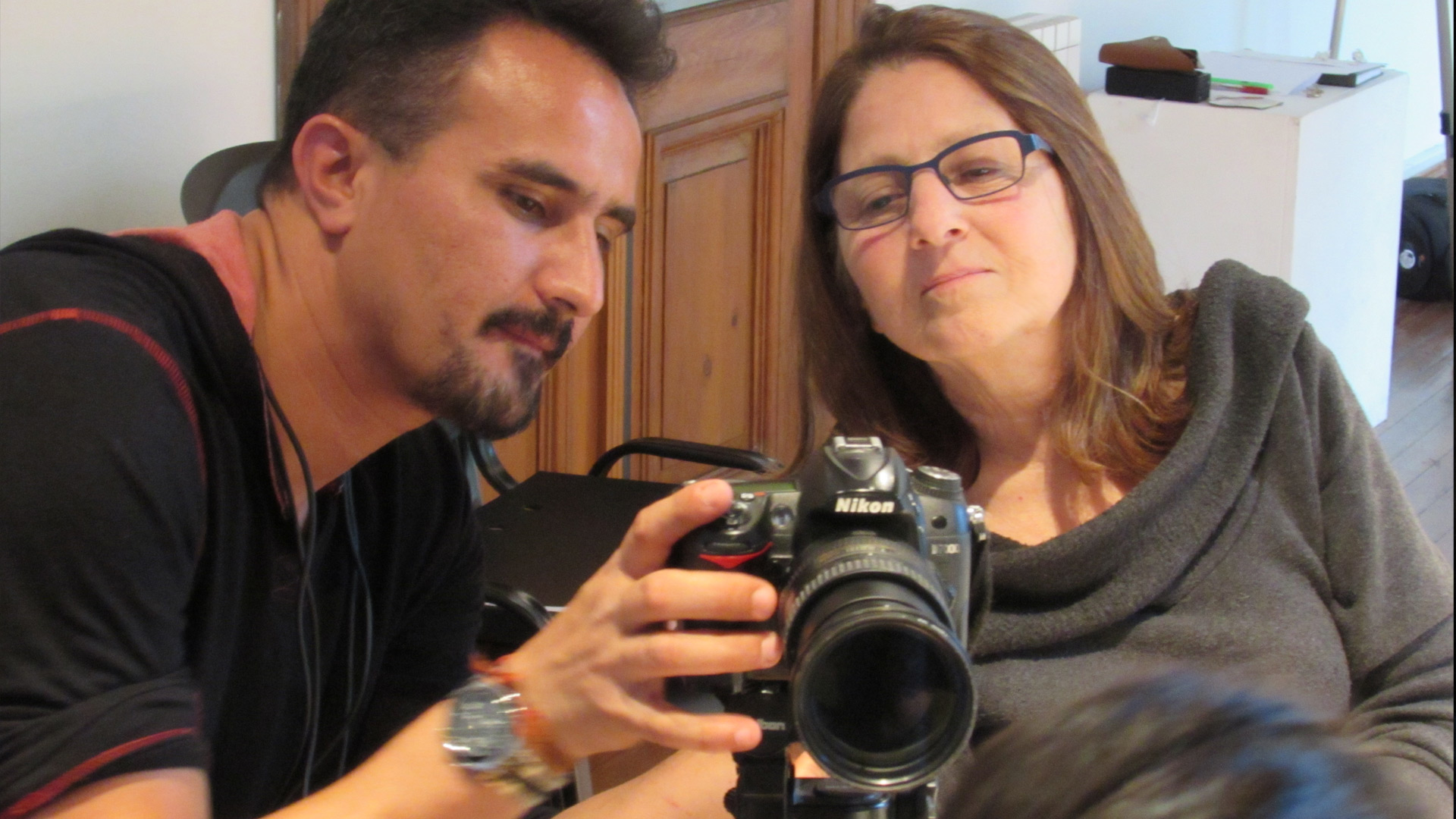

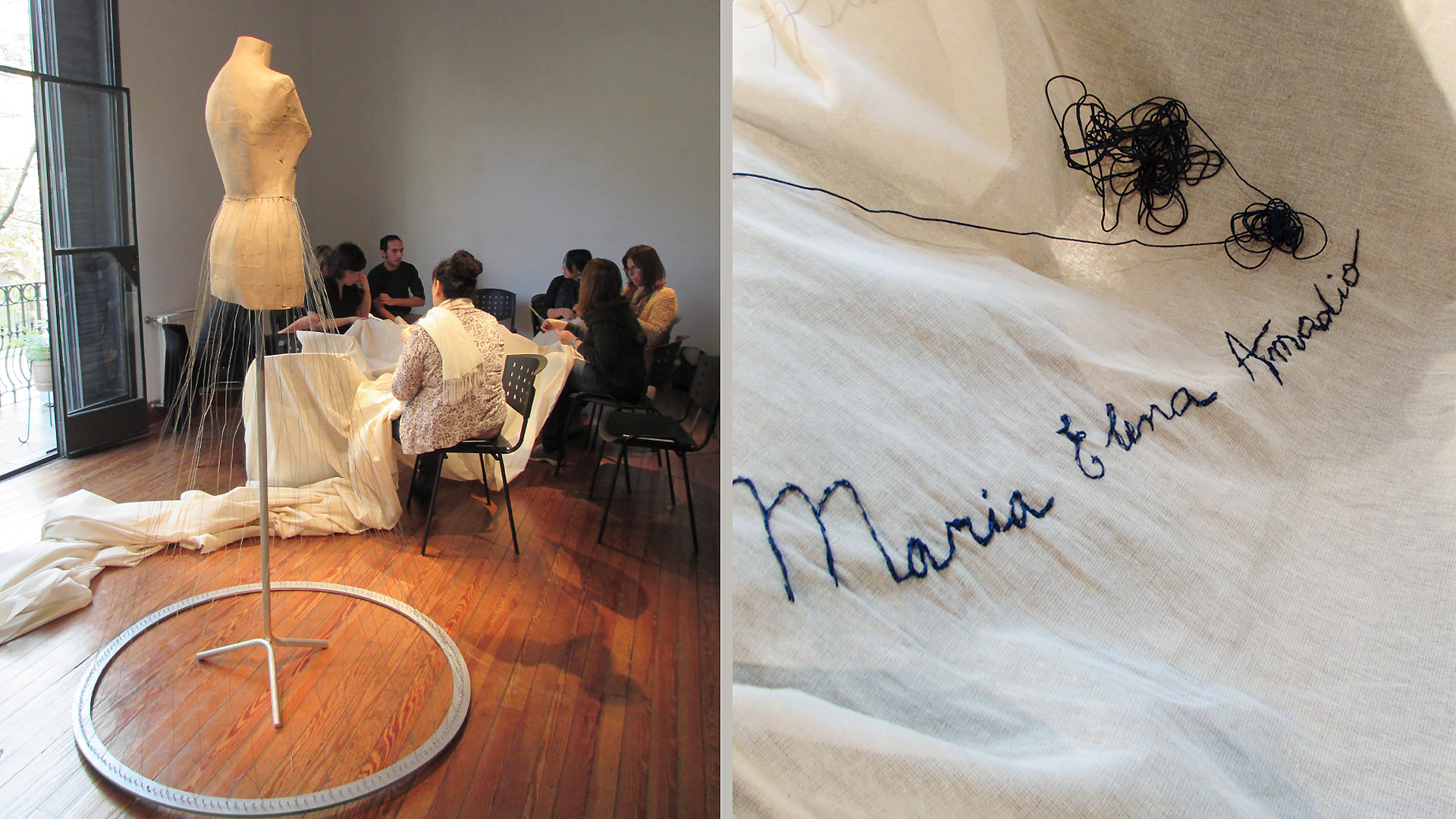
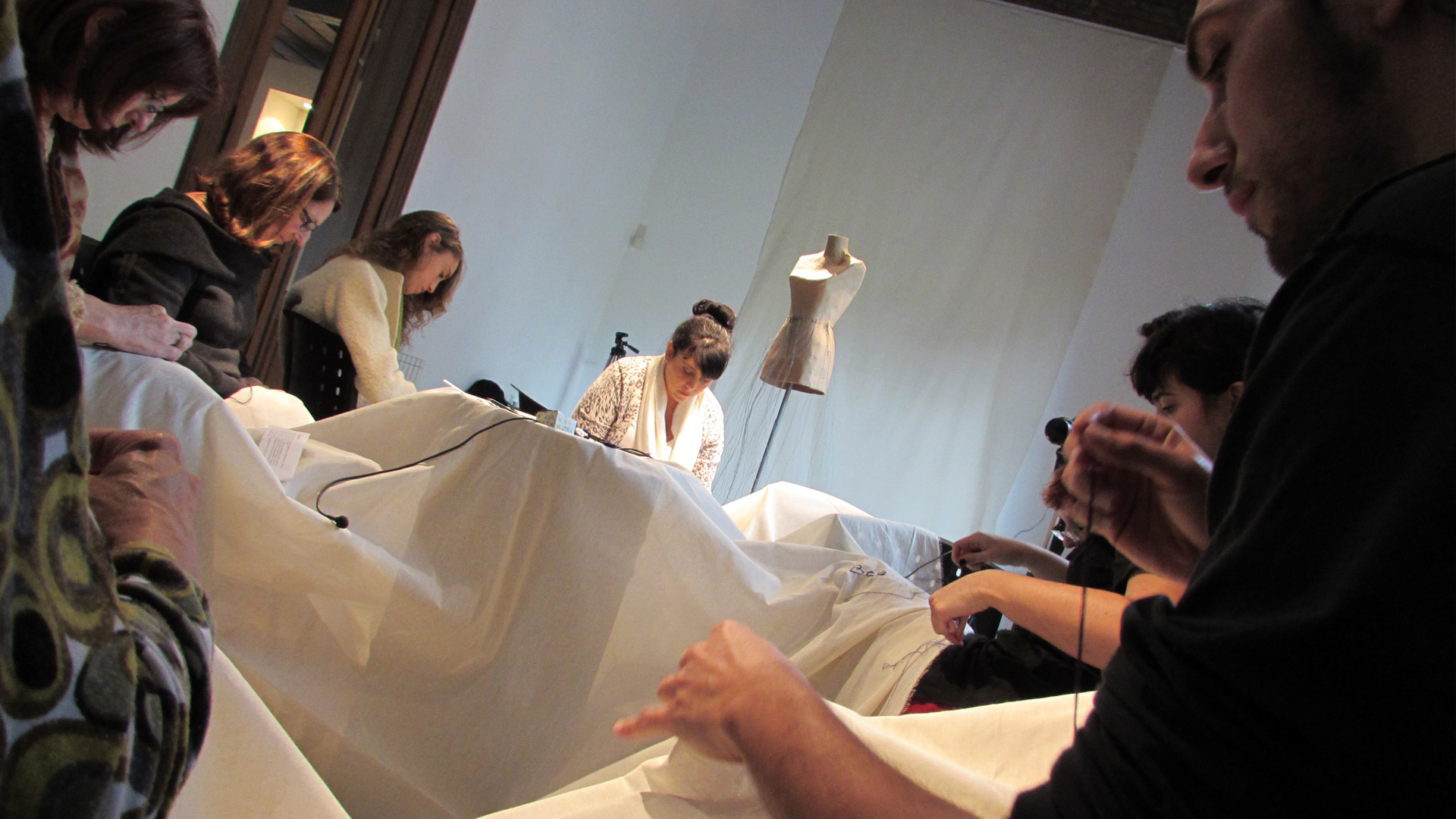
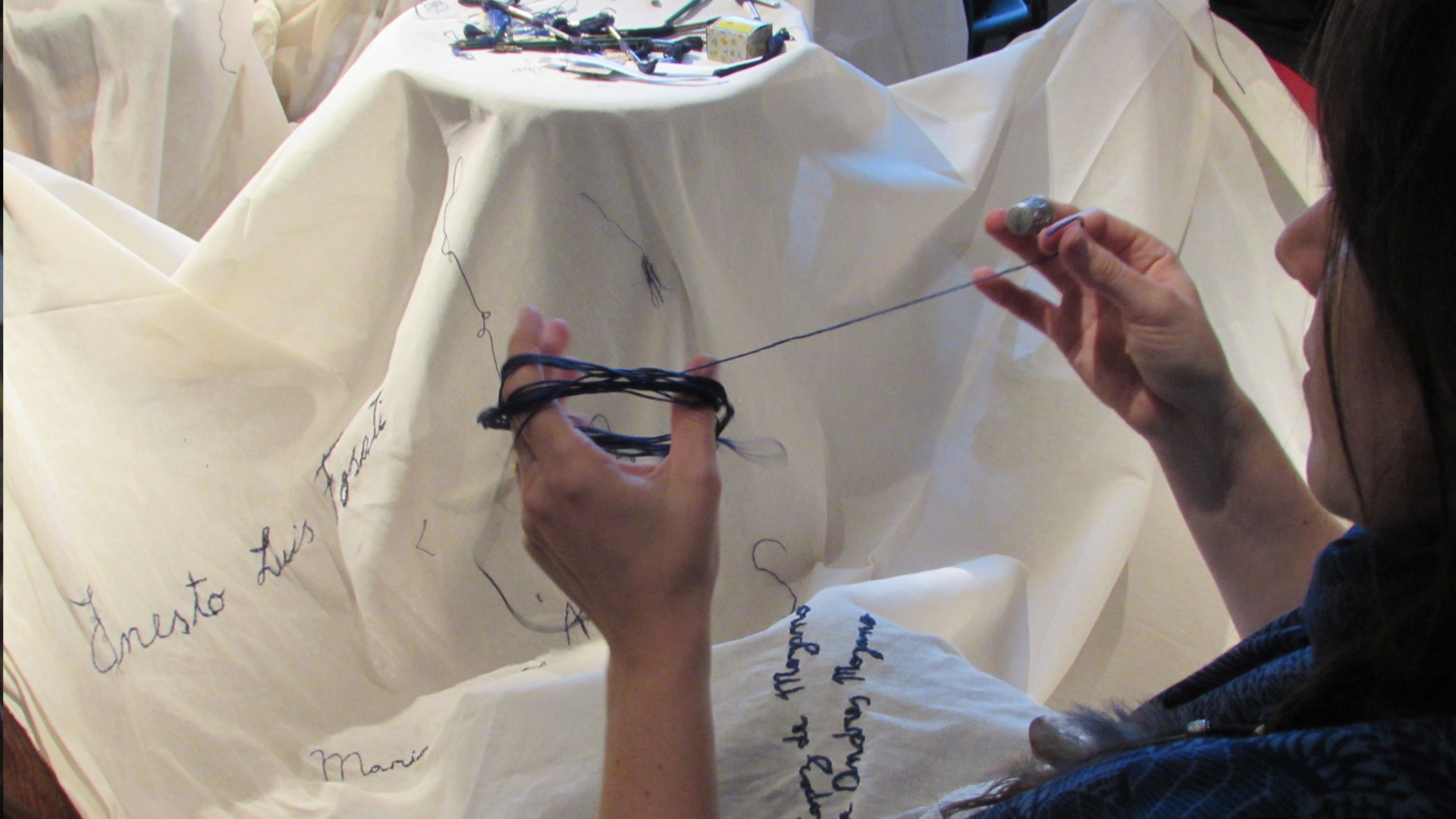
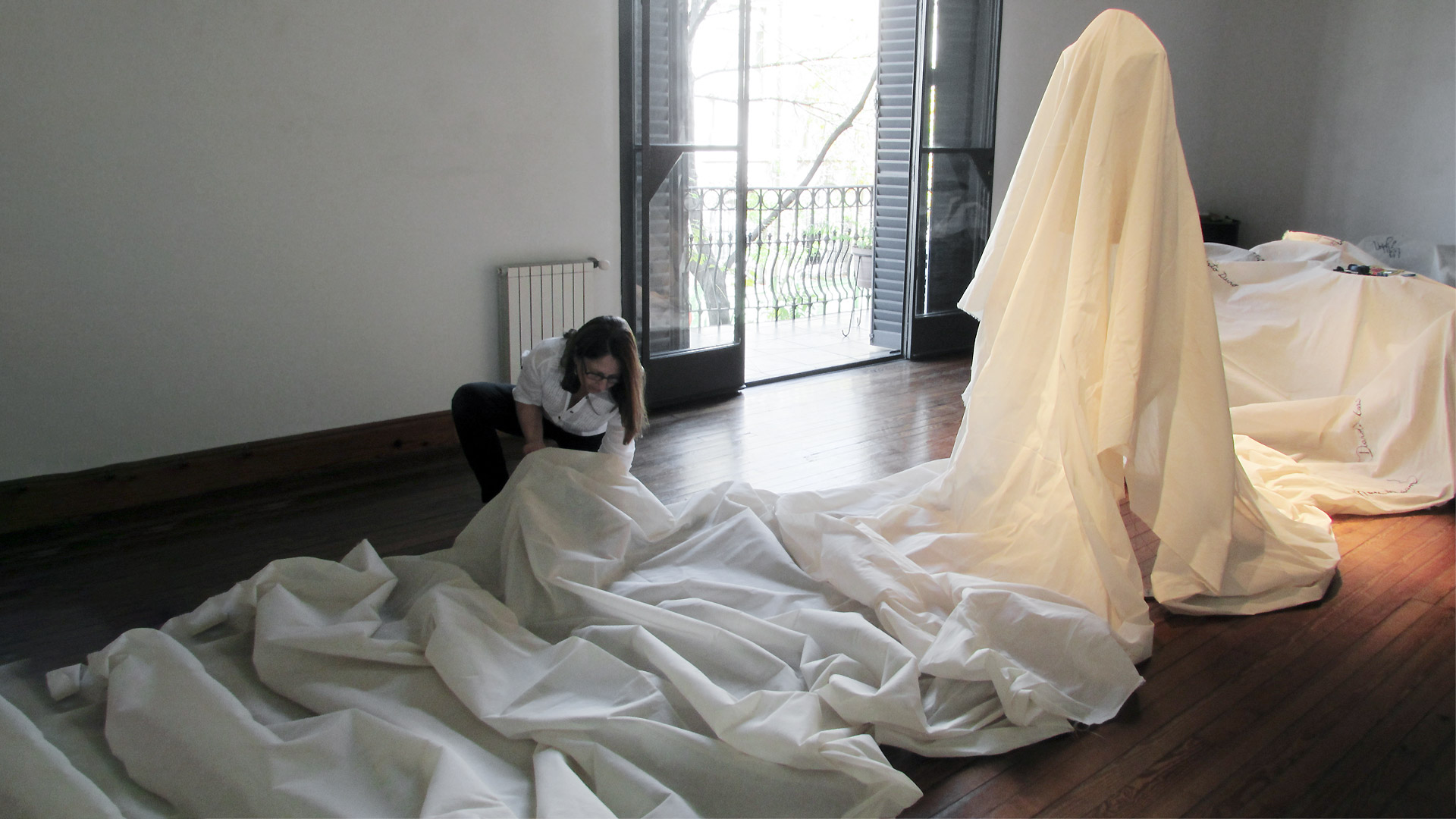
Related Activities
Exhibitions
Perpetually Settling Dust
Mónica Camin
20.05.15 20.06.15
Monica Camin’s installation, “El Rezo/Perpetually Settling Dust” made its debut at Sala Políglota during Memories, the ‘aceNITE event held on May 20, 2015.
The exhibit featured a human-shaped fabric piece, doubling as a screen for a video collaboratively produced with Kaloian Santos Cabrera, a Cuban photojournalist. The installation merged documentary and poetic imagery with the continuous soundscape of the Mothers and Grandmothers of Plaza de Mayo. This video not only heightened the solemn and ceremonial atmosphere but also delved into the residual impacts of cultural trauma.
Throughout the artist’s residency, a series of interactive sessions unfolded, engaging over 20 participants who contributed by embroidering the expansive cloth with the names of the desaparecidos—individuals who “disappeared” (vanished) during the Argentine dictatorship of the 1970s and 80s. These collective efforts added a poignant layer to Camin’s exploration about the enduring effects of historical events, fostering a profound connection between the artwork and the shared memories of the community.
ARTIST STATEMENT
El Rezo/ Perpetually Settling Dust is both a meditation on the repeated atrocities of state terrorism and a prayer for a different future.
After a decade of work centered on the Holocaust, this piece shifts attention to my native Argentina to dissect the cultural genocide that took place under a military dictatorship, referred to as the “National Reorganization Process” that ruled Argentina from 1976 to 1983. During this time human rights were ignored. 30,000 people—known as the desaparecidos—went missing; an estimated 500 babies born in captivity were given up for adoption, and left with no real identity.
This piece examines the residual effects of cultural trauma. In an exploration of expression in the form of community and healing through creation, the Argentine community was invited to participate in the embroidering of names of the desaparecidos.
Related artists
Opening: May 20, 2015
The artist expresses her gratitude to the participants of the “embroidery circles”: Niza Ballestero, María Noel Caridad, Cristina Duro, Elinor Peiretti, Silvia Guigón, Elena Gil, Melody Lachica Guini, Javier Cuberos, Veronica Souto, Clara Stivel, Susana Camin, Paola Cohen, Deborah Kaufman, Barita Vincenti, Denise Margueles, Miriam Bergonzi, Alba Castillo, Celina Levy, Beatriz Vaitkeviciuds, Sandra Astuena, Diana Susevich, Laura Ponturo.
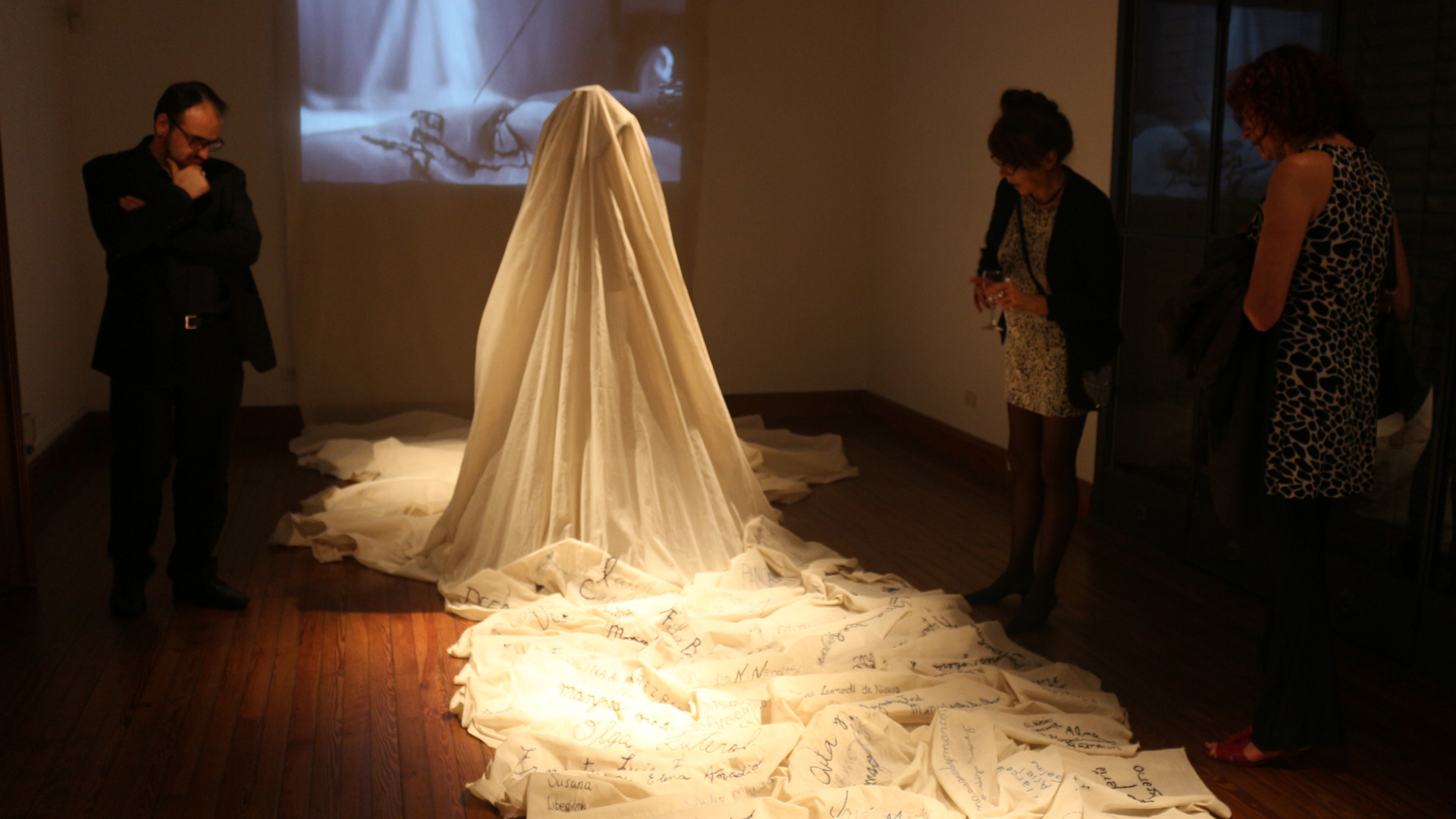
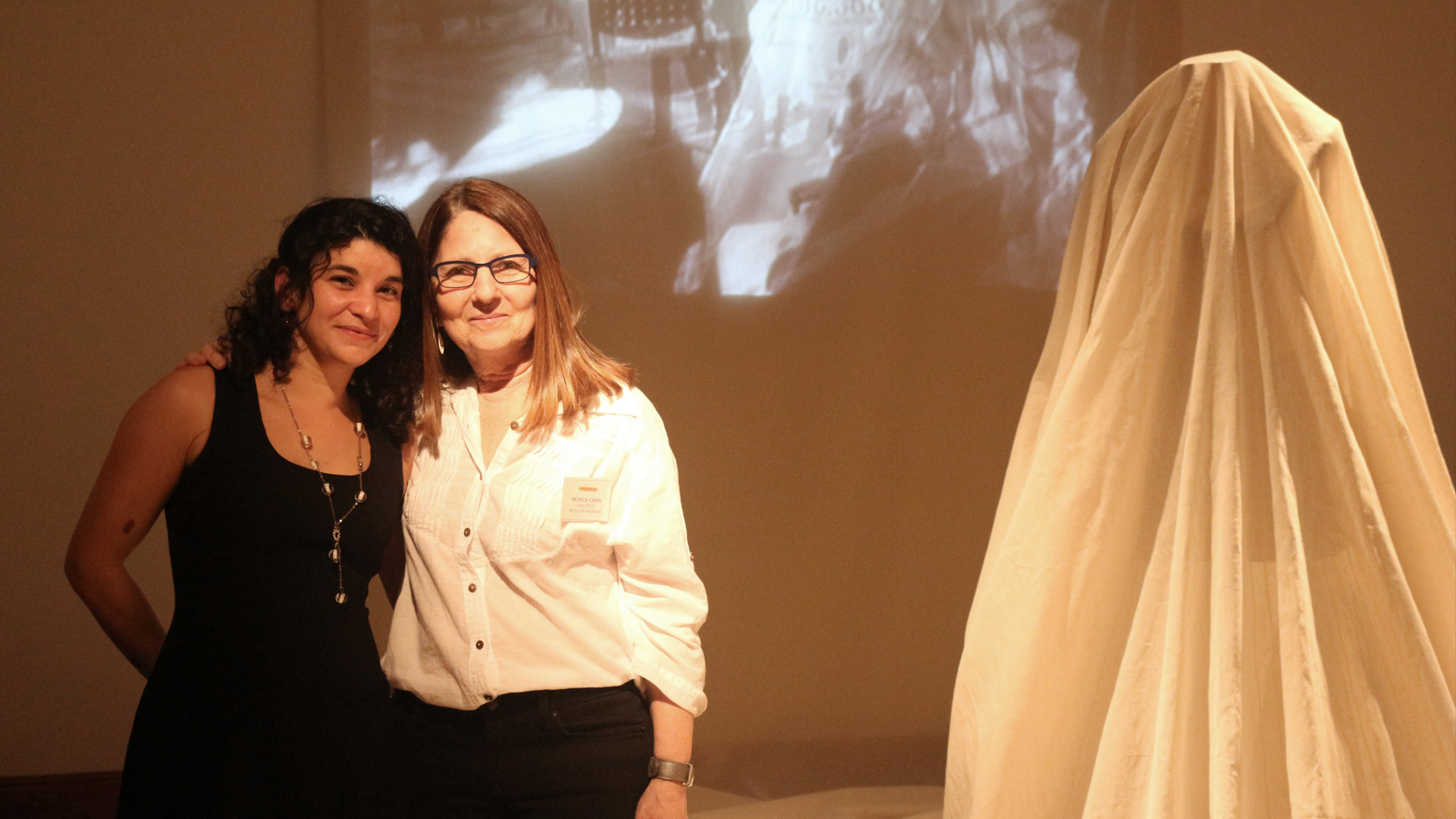

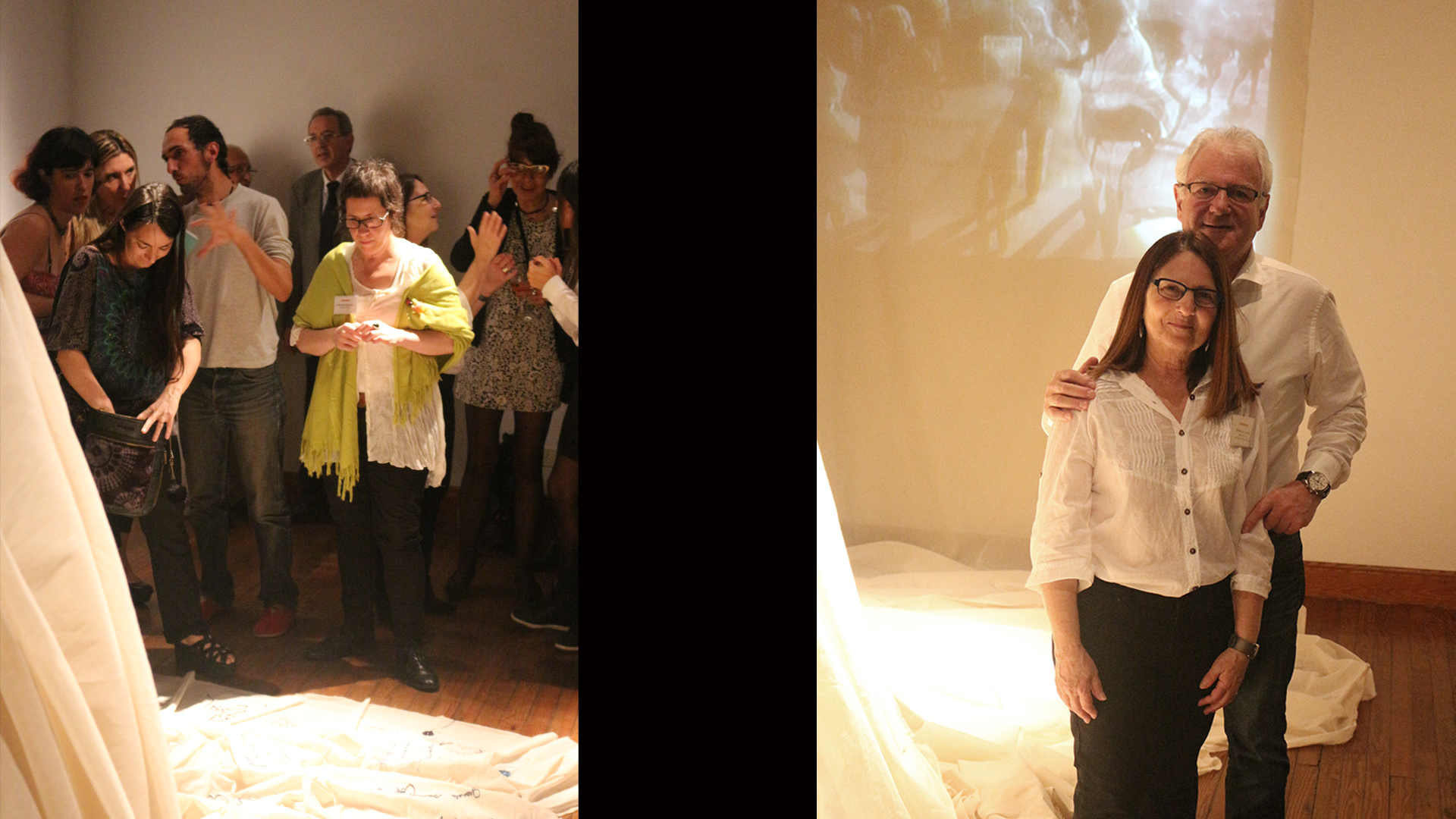
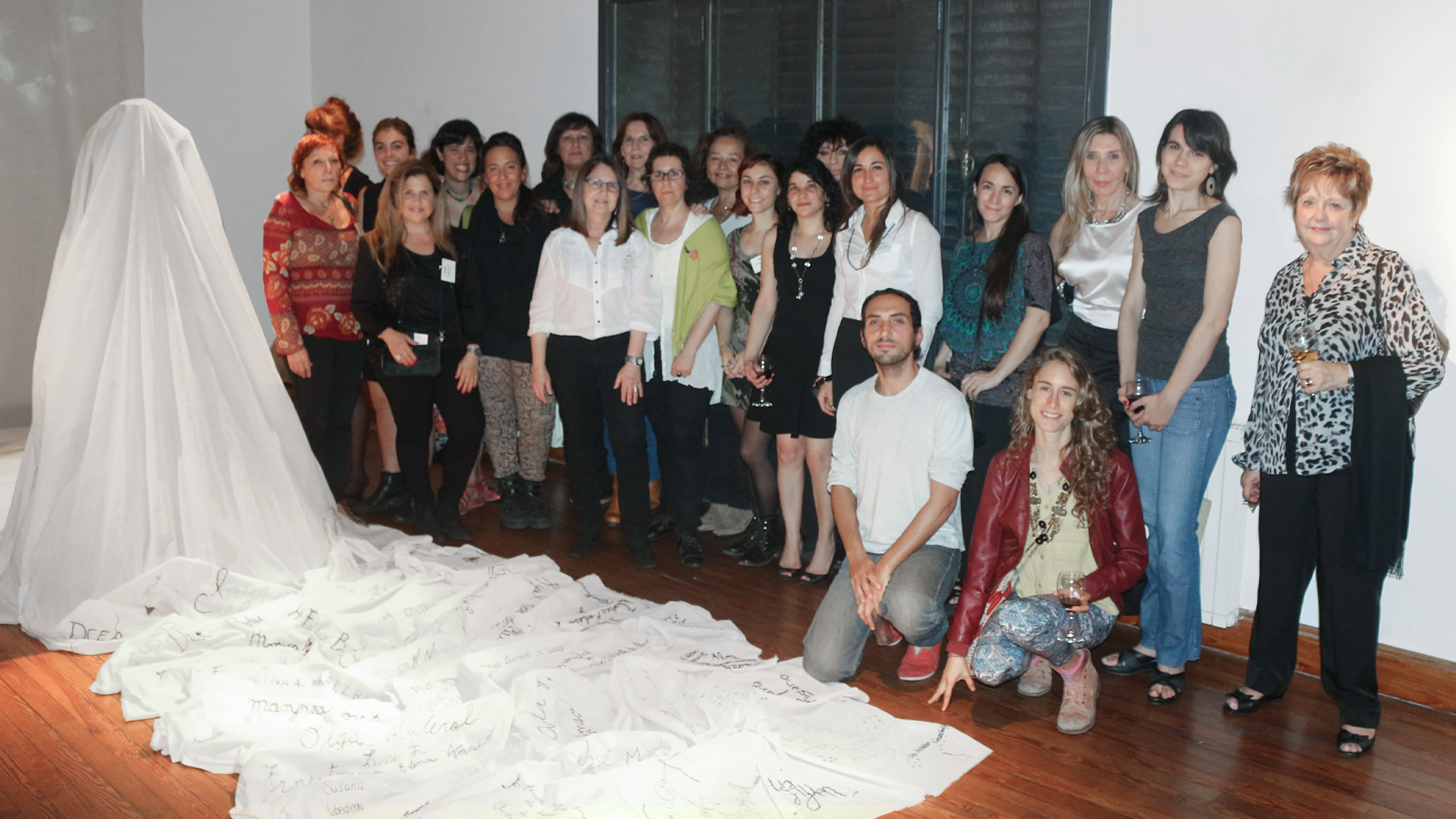
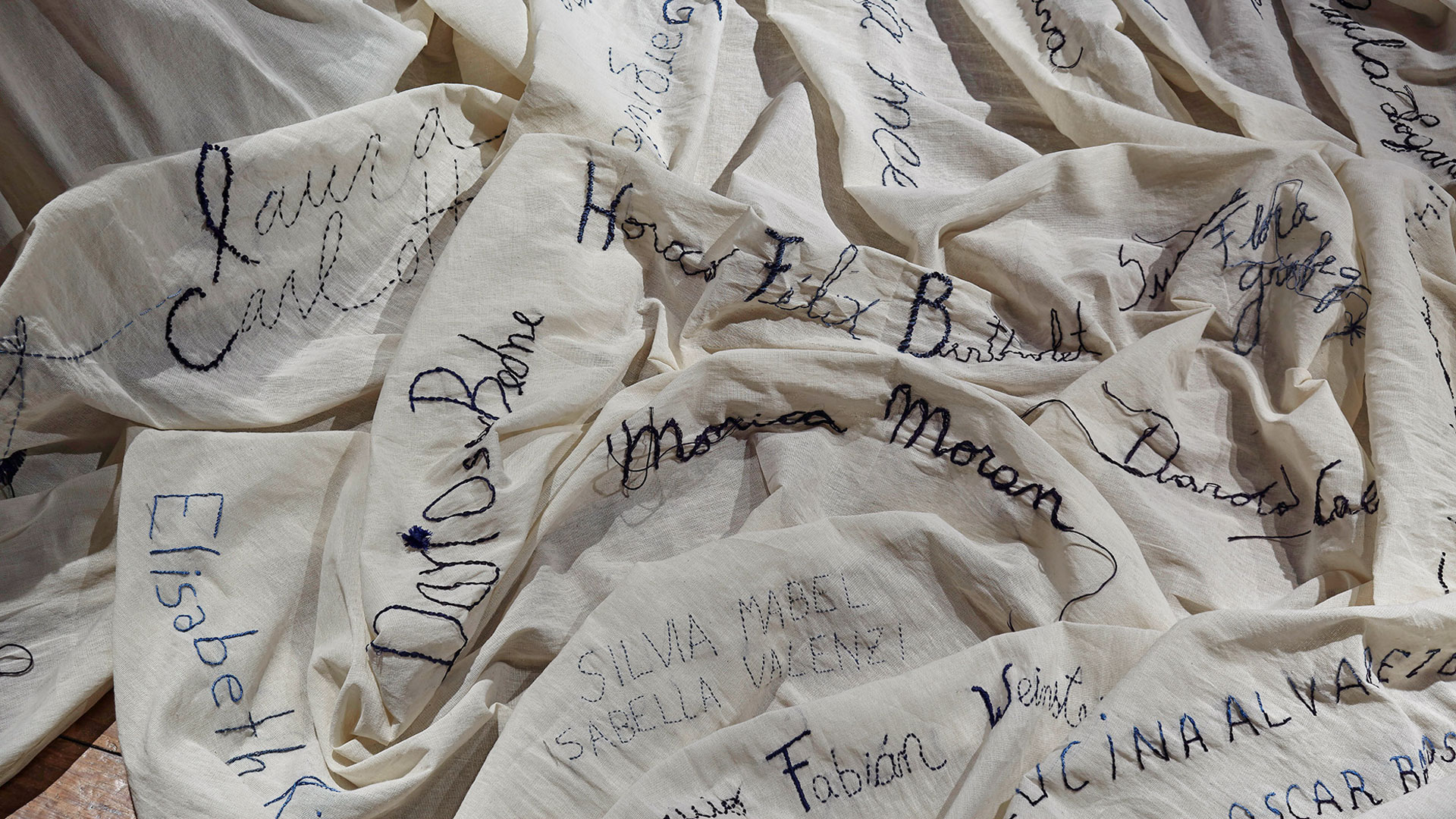
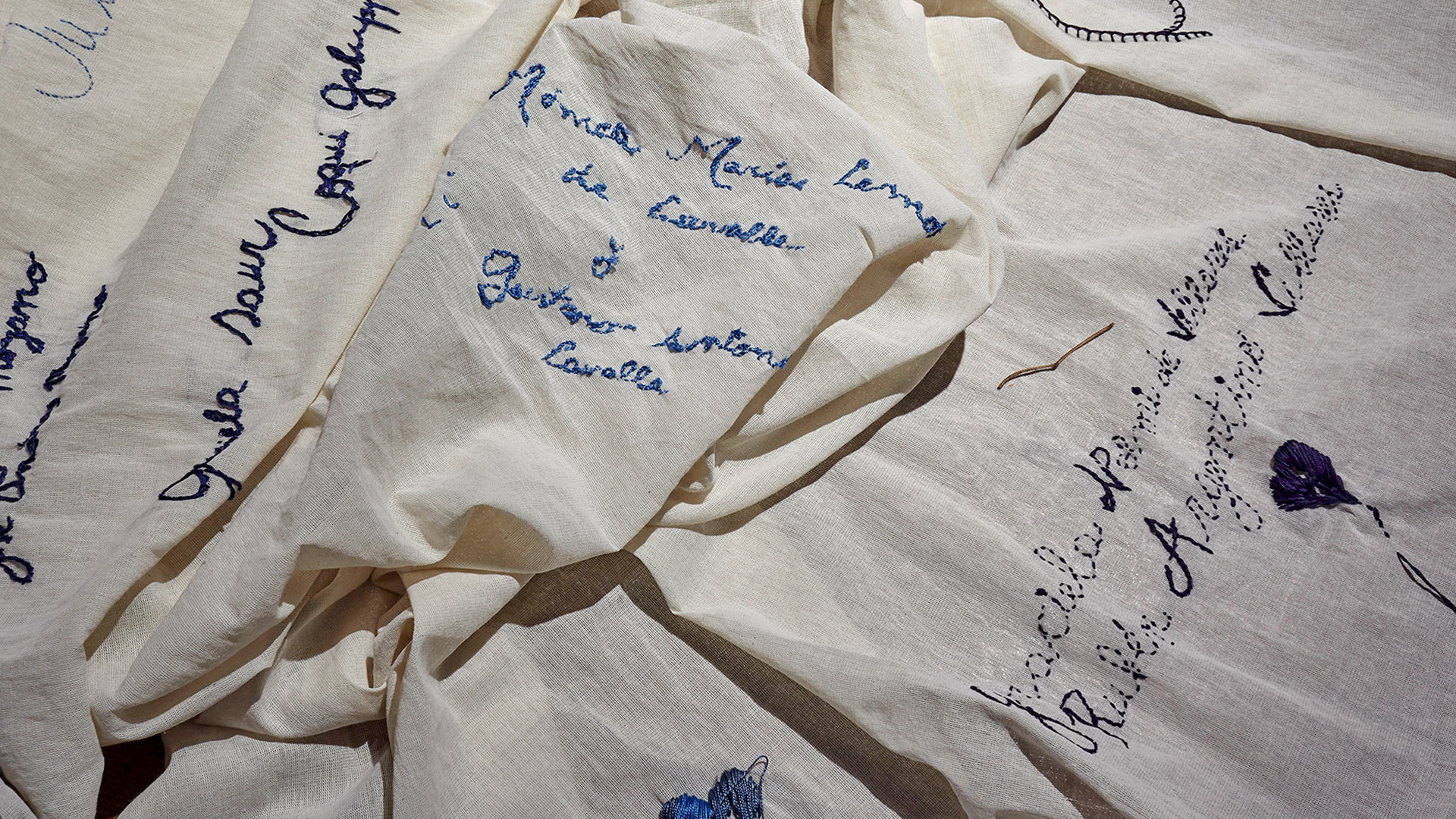
Open Calls
Perpetual Settling Dust
Sewing Circles
04.04.15 29.04.15
We invite the community to be part of Perpetually Settling Dust (El Rezo) by participating of the “sewing circles” to embroider the names of documented Disappeareds onto a fabric skirt that will become the skirt of the sculpture.
Perpetually Settling Dust (El Rezo) is a mixed-media transition piece that shifts in the approach and process of painter/sculptor Monica S. Camin’s practice. Through exploration of her roots, her own individual existence and the effects of a life lived, Camin uses her work to ask questions and find answers through her narrative creations. However, like most inquiries about history, identity and accountability, one response disrupts another. And much like the aftermath of conflict and the unknown consequences of our own actions, we are left with perpetually settling dust.
Camin’s work is dedicated to closeness—an ever-deepening closeness to the infrastructure of oneself, the universalities that unite humankind, and the emotional energy that either overtly or subtly drives all things.
When? On May 11th, 12th and 13th from 3 to 6 pm at Conesa 667, Fundación ‘ace.
Related artists
